Why East Anglian dairy values muck-for-straw deal
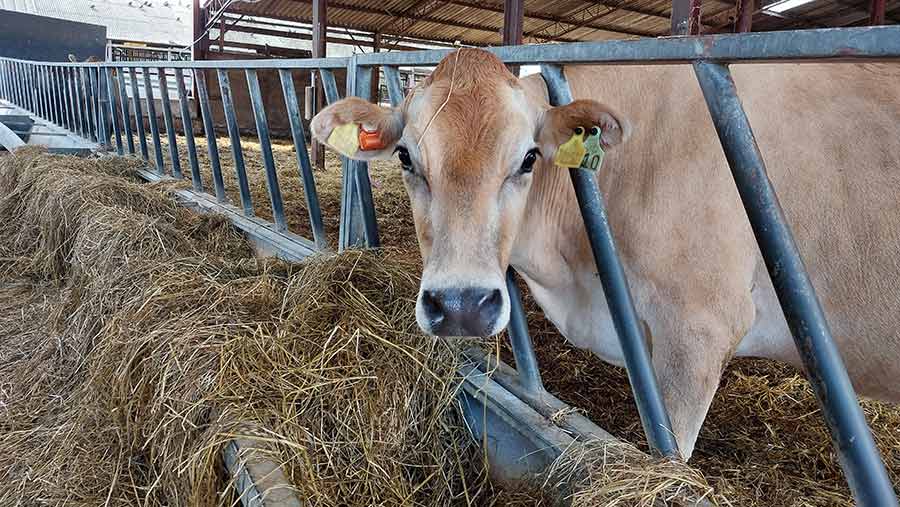 © MAG/Shirley Macmillan
© MAG/Shirley Macmillan Muck-for-straw deals between neighbours require your own kit, being on the ball and good communication.
This is what brothers Oliver and Lewis Rushmer have found, having inherited four such deals from their parents, Jane and Paul, at Laurel Farm, Thurlton, in Norfolk.
See more: Farmers Focus: Fortunate to be farming with my parents
The Rushmer brothers estimate that they need 2,500-3,000 straw bales a year for their livestock, which are all loose housed.
Typically, they spend three weeks each summer, spread over July and August, to bale enough wheat and barley straw within a five-mile radius of the farm.
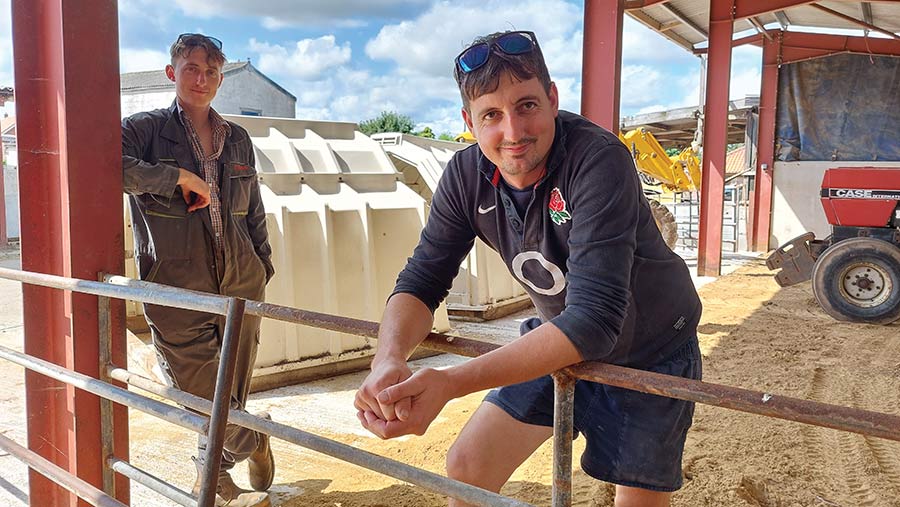
Lewis and Oliver Rushmer © MAG/Shirley Macmillan
Barley straw is preferred for the pigs, which use 600 bales a year, but clean, dry wheat straw is earmarked for the dairy herd, to keep cows clean and control mastitis.
Cows are in at night from September, and fully housed at the end of October until turnout by day in early February and full time in March.
Additional straw is used in calf pens and the beef yards until stock are turned out in March or April. All of the cattle requirements add up to some 2,400 bales a year.
Farm facts
- 180 cows Jersey and cross-breds
- Avergare yield 6,500 litres
- 1.2-1.5t concentrates
- Autumn block-calving
- 80 followers
- 290 beef cattle (beef calves reared to 24 months)
- 1,900 bed-and-breakfast pigs on a finishing contract
- 61ha (150 acres) owned: 20ha (50 acres) grass; 20ha (50 acres) maize; 20ha (50 acres) double cropped with maize followed by Westerwolds Italian ryegrassmix for strip grazing in February
- 81ha (200 acres) marsh grazing rented
“We work with four main farms on exchanging straw for muck and buy straw from one farm that is 10 miles away, usually paying £25/acre. Last year we were happy to pay per bale as it was fairer.
“We can round-bale ourselves, but need a contractor for square bales, so prefer square for haulage to cut costs,” says Lewis.
Timeliness and flexibility
Baling their own straw may be cheap, but it is not free. The farm kit includes a round baler, a 10m trailer with sides and bale clamps for carting, and two 150hp tractors.
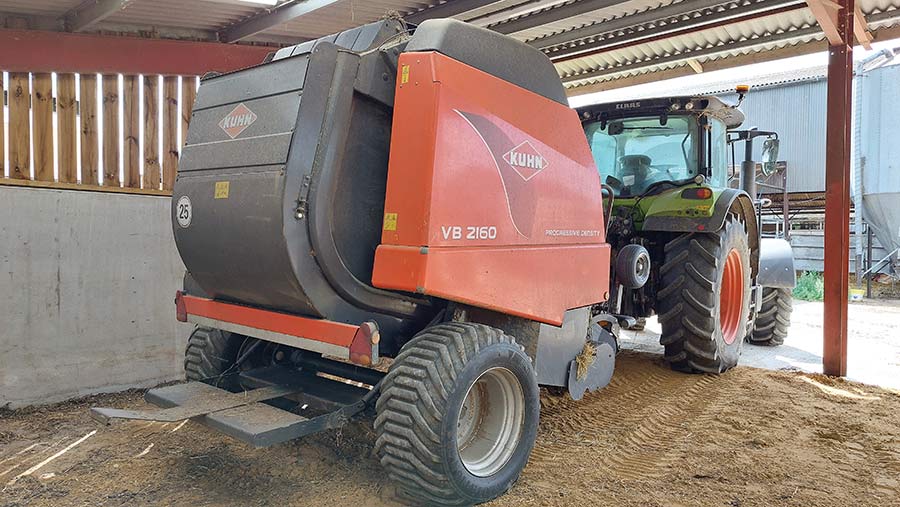
© MAG/Shirley Macmillan
Having your own kit is essential, however, since there is a very short window to get straw baled, usually about two days.
“We want to get the straw off – clean and dry – so we are on the ball; we don’t like it sitting there and get it soon as it’s fit to clear,” says Lewis.
Straw yield is usually 17 round bales/ha, or 6-7.5 Hesston bales, he adds.
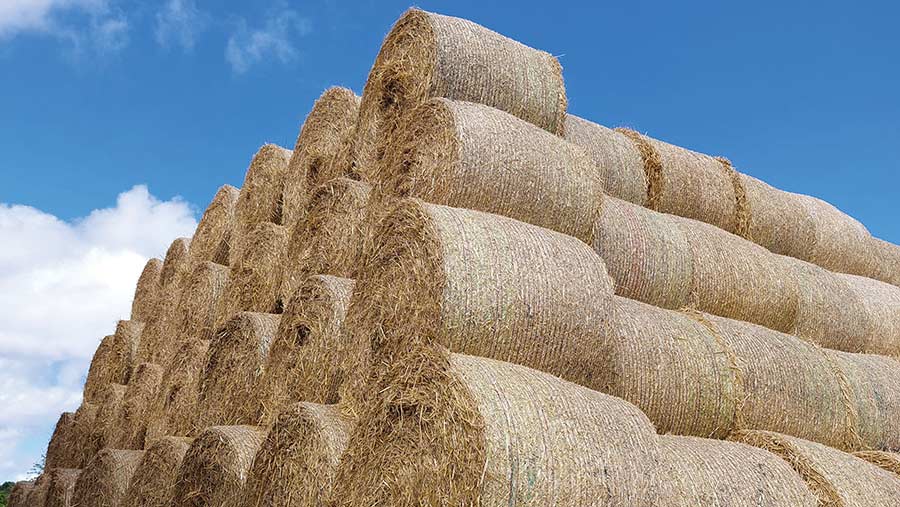
© MAG/Shirley Macmillan
The baler is also used to make silage from surplus grass off the farm’s 40ha (100-acre) grazing platform, and the rented 81ha (200 acres) of marsh grazing for heifers and beef cattle. Only maize is clamped.
Baling in a rotational grazing system allows them to be flexible in when, and where, they take surplus grass for silage.
“We have the machines because we do everything ourselves, including our own mucking out; the contractor chops the maize and clamps that,” says Oliver.
Value of muck
In winter, pigs are mucked out and bedded up daily and dairy cows are bedded up twice a day and mucked out fortnightly.
Muck is stored under cover for two to three weeks and collected by their neighbours, using Laurel Farm’s loader tractor and their own trailers. No one has any preference for pig or cattle manure.
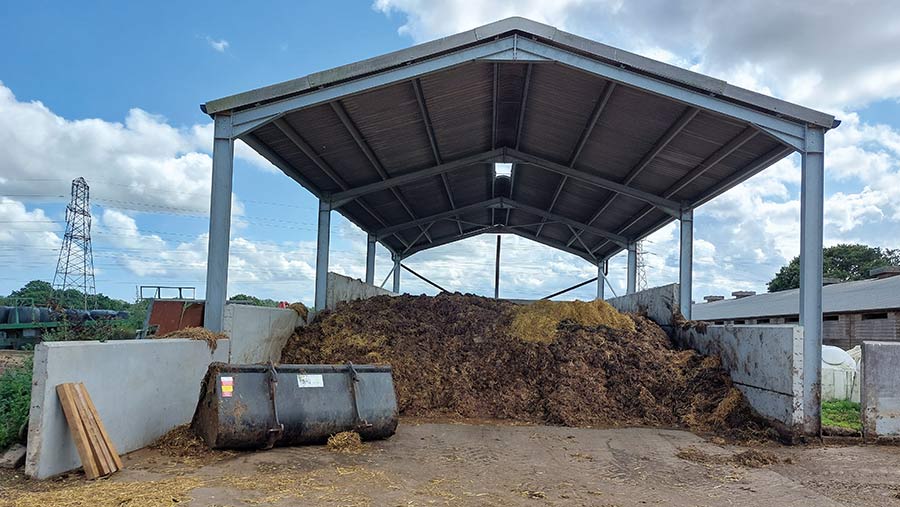
© MAG/Shirley Macmillan
The Rushmers then spread muck on their own maize ground. Oliver says the soil is in good shape, which helps the maize hold on in a drought.
Although they have not analysed the muck’s nutrient content, Lewis points out that the only fertiliser they use is a “starter”, applied at drilling (at 37kg/ha). The rest of the crop’s nutrients are supplied by muck.
“Our neighbours put our muck onto maize crops for an anaerobic digester [AD] plant, and also onto their rape and wheat crops; they keep coming back for it,” he says.
Communication
About four years ago, straw supplies became seriously tight locally when straw burners started taking up vast quantities.
They considered themselves fortunate to be working with their neighbours on family farms and were able to maintain stocks.
The brothers agree that the key to good collaboration is communication and keeping their neighbours happy.
They know there is a cost to their three weeks of time, diesel and machinery, but they don’t count trailer loads, or trade-off specific tonnes of muck for straw.
And as the herd is autumn block calving, milking tails off in summer and cows are dried off, leaving them time for building projects or fieldwork.
Further options
“Our neighbours know what they want, and we would welcome further opportunities for collaboration.
“We are competing with an AD plant locally but would like more options for forage from farmers growing break crops. We’d like a grass/clover silage,” says Oliver.
Lewis adds that they have yet to borrow anything from their neighbours, but he is sure they would help out if needed.
He says one bonus of working with four farms is that there is always someone available to cart muck.
The farm has reached its limit on land acres; however, by collaborating with other farmers contract-growing forage crops, Lewis reckons they could push dairy cow numbers up to 300.
They have thought about installing cubicles to reduce the amount of straw needed, but it would need “serious investment” in cubicles, slurry storage and handling.
“We only use the housing for five months of the year as we want cows out grazing as much as possible, and our mastitis rates are relatively low, at 16%.”
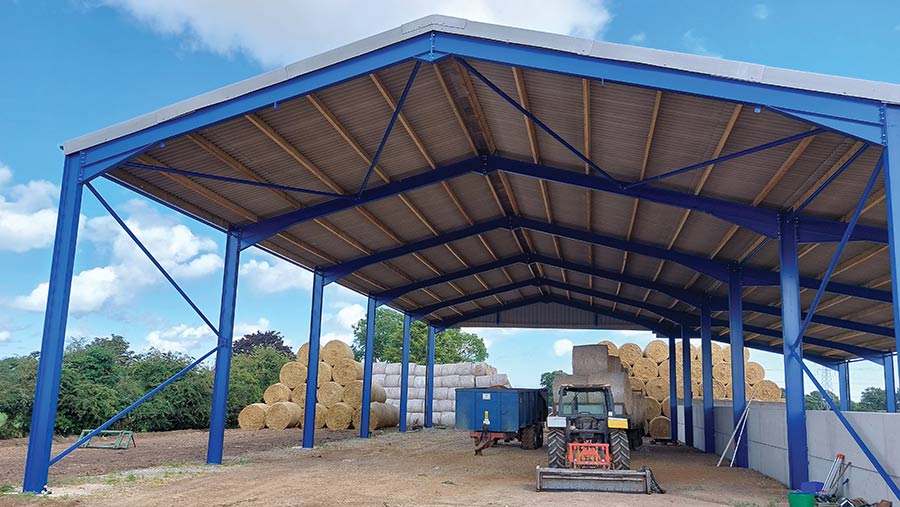
© MAG/Shirley Macmillan
Instead, the Rushmer family’s latest investment has been £30,000 in a new straw shed.
This can hold 900 Hesston bales – more tonnage for the farm and all under cover to reduce spoilage.
“If we waste just one round bale a day at £12/bale over five months, that would be £1,860, and payback would be 16 years.
“But there is also time saving, as we are not having to peel off the rubbish and cart it away, and there is the reduced risk of mastitis to consider [by using drier straw],” says Lewis.

